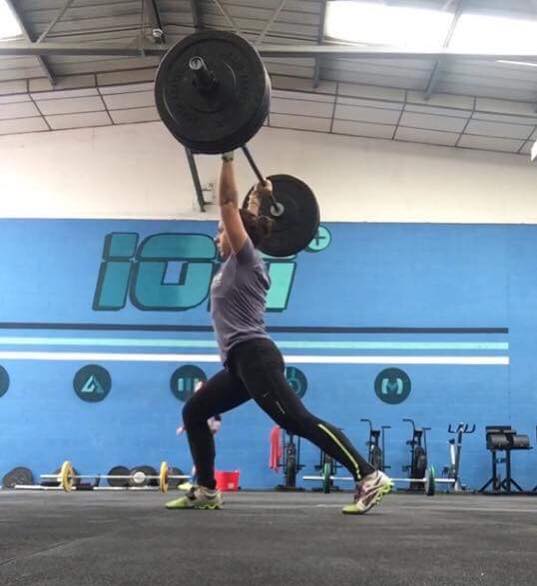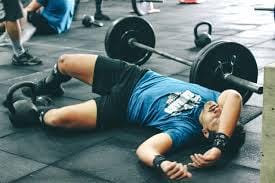As a facility, at ION Strength and Conditioning, our aim is on increasing an individual’s General Physical Preparedness (GPP), meaning we are not looking to focus on just one aspect of fitness, we are trying to develop all of the 10 components of fitness – Endurance, Stamina, Strength, Flexibility, Power, Speed, Agility, Coordination, Balance and Accuracy.
That being said, we also acknowledge that Strength is the component of fitness that underpins many of the other areas of fitness.
The Strength and Conditioning Industry is littered with self-proclaimed experts producing the magic programme that is the answer to achieving all your desired goals. The reality is, a lot of these have lost sight of the basics. Below, we break down some of the most common myths and discuss the best way to go about strength training.
Strength Training & CrossFit
Strength training is an essential part of all successful CrossFit programmes. Focus on strength training can help CrossFit athletes to boost their muscular endurance and perform better in their WODs. How? By focusing on building strength in your key compound lifts, you are then able to move through WODs with lighter weights that much faster as that weight no longer feels as heavy as it used to.
Let’s say a WOD calls for 50kg front squat (Rx’d). You might be able to do this as prescribed, but you feel like you’re really struggling to get through the workout, and you can feel your form worsening with each set. That’s where strength training comes in.
When you take some time to focus on building your strength, you’re then able to come back to that WOD and perform it more efficiently, as these 50kg don’t feel as heavy anymore and you can keep your form on point throughout the workout.
If you feel stuck and want to improve your performance and increase your PRs, then strength training is the way to go.
Common Mistakes
The fitness industry is filled with the latest fads and ‘simple solutions to all your problems’. The things that are going to bring the biggest bang for your buck are often forgotten or ignored because they don’t seem as sensational as the latest trend.
Louie Simmons of Westside Barbell put it best by saying ‘stop wasting time trying to reinvent the wheel, 99/100 times it has been developed by someone else. Spend your time developing the art of coaching by gaining life experience in the field’. Here are some of the most common mistakes that are prevalent amongst the athletes…
1. Not Being Patient
We often tend to fall for new shiny things, always in search of something new that will hopefully get us to where we strive to be. This leads to athletes jumping from one programme to another, without following through with it.
Our body takes time to adjust to a new stimulus, to change, grow and build strength. In strength training, there are no shortcuts. You simply need to be consistent over a long period of time. Therefore, it’s important to stay patient and trust the process and not be swept away by all the new shiny programmes that promise the world. Which brings us to our next point…
2. Jumping Into Complex Programmes
When it comes to strength training, the basics will always give you the best bang for your buck. There is no need to overcomplicate your programme with unnecessary techniques and shiny new trends unless you are a competitive powerlifter with years of experience. However, for the majority of us, sticking to the basics will do the trick.
3. Ego Lifting
It’s important to listen to your body and think about the bigger picture when it comes to strength training and lifting heavy weights. Just because you think you can lift a particular weight, doesn’t mean that you should do it all the time.
There are times for maxing out, and there are times when we need to back off and focus on technique, form and mobility. We have to leave our ego at the door and stick to the programme. Lifting to failure all the time will only get us so far, and most likely will end up in an injury or undermine our progress.
4. Focusing Too Much on Lifting Gear
Lifting gear usually falls into two categories – things that are useful when you’re training at heavy loads, and things promoted by celebrity coaches that will supposedly give you an edge. While utilising tools such as lifting belt and knee wraps is helpful when you’re doing a one-rep max or training at heavier loads, it’s also important to have training sessions where you train without them.
We have to learn how to fire up our muscles and focus on our form and mobility, instead of relying too much on equipment to take our pains away, or help us lift more.
Technique: The Key To Increased Strength
A couple of years ago, Jordan and I spent a couple of days in London with one of the world’s leading Strength Practitioners, Sebastian Oreb, learning his strength philosophy and methods. Sebastian coaches many top athletes from around the world ranging from Rugby League Players to Powerlifters, to Strongman. A highly experienced and knowledgeable coach to say the least.
Why I believe Sebastian Oreb is one of the best coaches out there is the fact he focuses on perfecting the basics. His confidence to focus on simplicity and doing the basics correct is the key to his methods.
Sebastian Oreb knows what it takes to get himself and his athletes STRONG. It isn’t through complicated, fancy exercises or programmeming, it’s by perfecting the basics. His standout statement across a couple of days was that ‘Technique is everything, Load is king’.
Meaning, the load is only increased when the technique is dialled in.
Should You Train To Failure?
Let me get this straight… You don’t get strong by missing/failing reps, which occur far too often when it comes to strength training. You get strong by making lifts. Training to failure all the time will only undermine your progress. Here are the key reasons why you should avoid training to failure…
Increased risk of injury
Trying to grind out reps where technique is breaking down isn’t going to make you strong, it’s going to massively increase the chances of injury that will then prevent you from being able to participate in the exercise.
Decreased self-confidence
If you miss lifts in your training or you constantly grind out your reps with poor form, then negative thoughts will set in and have an impact on your training as well as being more than likely to lead injury. Train to build confidence.
Slower Recovery
Training to failure increases the amount of time we need to recover before our bodies return to their baseline strength levels and we can go back to the gym and lift again. In other words, if you’re taking your sets to absolute failure, you are putting yourself at a disproportionate amount of fatigue, which will negatively affect your other workouts for the rest of the week and potentially slows down your progress.
When you don’t see yourself progressing week after week, it affects your mindset, you lose your motivation and drive to continue training and start seeking for the “one and only” programme/exercise/technique to boost your results.
Avoid this vicious cycle, and stick to the basics: focus on your form and trust the process.
‘Plain and simple, never miss reps. Missing reps doesn’t make you stronger, making them does. Missing reps is a bad habit to get into and will damage your psyche and confidence’. – Chad Wesley Smith
Focusing on your technique pays off BIG time…
Beating your current PR numbers can be a great motivation to start with, but the more experienced you are, the more time it takes to build strength. At some point, we all face a plateau in our training where nothing seems to help us to put those extra plates to the bar.
That’s when we have to shift our mindset and transition from being a PR-oriented athlete to a process-oriented athlete. Focusing on technique and good movement patterns will help us to incorporate our muscles more efficiently which will lead to greater strength. If that’s not enough of a motivation, then here are some further benefits you might want to consider…
Overtraining and injury prevention
When it comes to lifting and getting stronger, submaximal training is 100% the way to improve. It will allow you to perfect technique whilst also being less of a toll on your central nervous system that will prevent you from overtraining and injury.
Confidence boost
But the biggest factor of all is that it will build CONFIDENCE and confidence along with striving for perfection in your lifts will make you stronger, 100%.
Bigger Gainz
Focusing on your technique and making sure that you are working through a full range of motion within the movement, not only helps you to build strength, but also enables you to build more muscle. Research published in the Journal of Strength and Conditioning showed that increased range of motion leads to an increase in strength and muscle hypertrophy. The study lasted 12 weeks, with 3 training days a week. The participants were separated into two groups, where one group did their leg exercises in 0 to 50 degrees, and the second group performed the same exercises from 0 to 90 degrees.
After the 12 weeks of training, the second group (longest range of motion) gained the most strength and muscle size. In addition to that, the fat stores within the affected muscles were reduced more in the group with a bigger range of motion.
‘Technique is everything, load is king’. – Sebastian Oreb
Perform key compound exercises and train for perfection in how you move and it will have a big impact on how you progress and increasing your overall strength and all-round fitness.
Learn more about the importance of movement efficiency, technical competency and patience in our podcast with a competitive powerlifter and coach Jordan Helyer.





